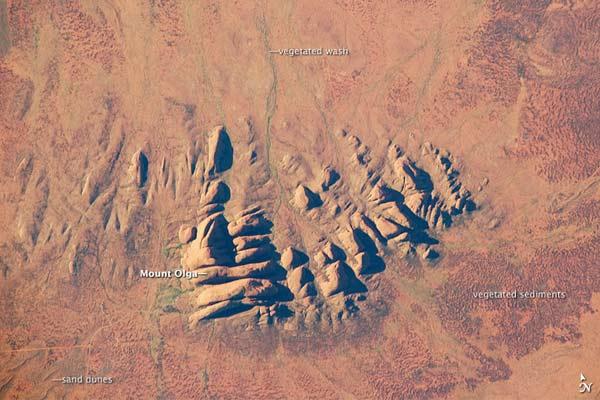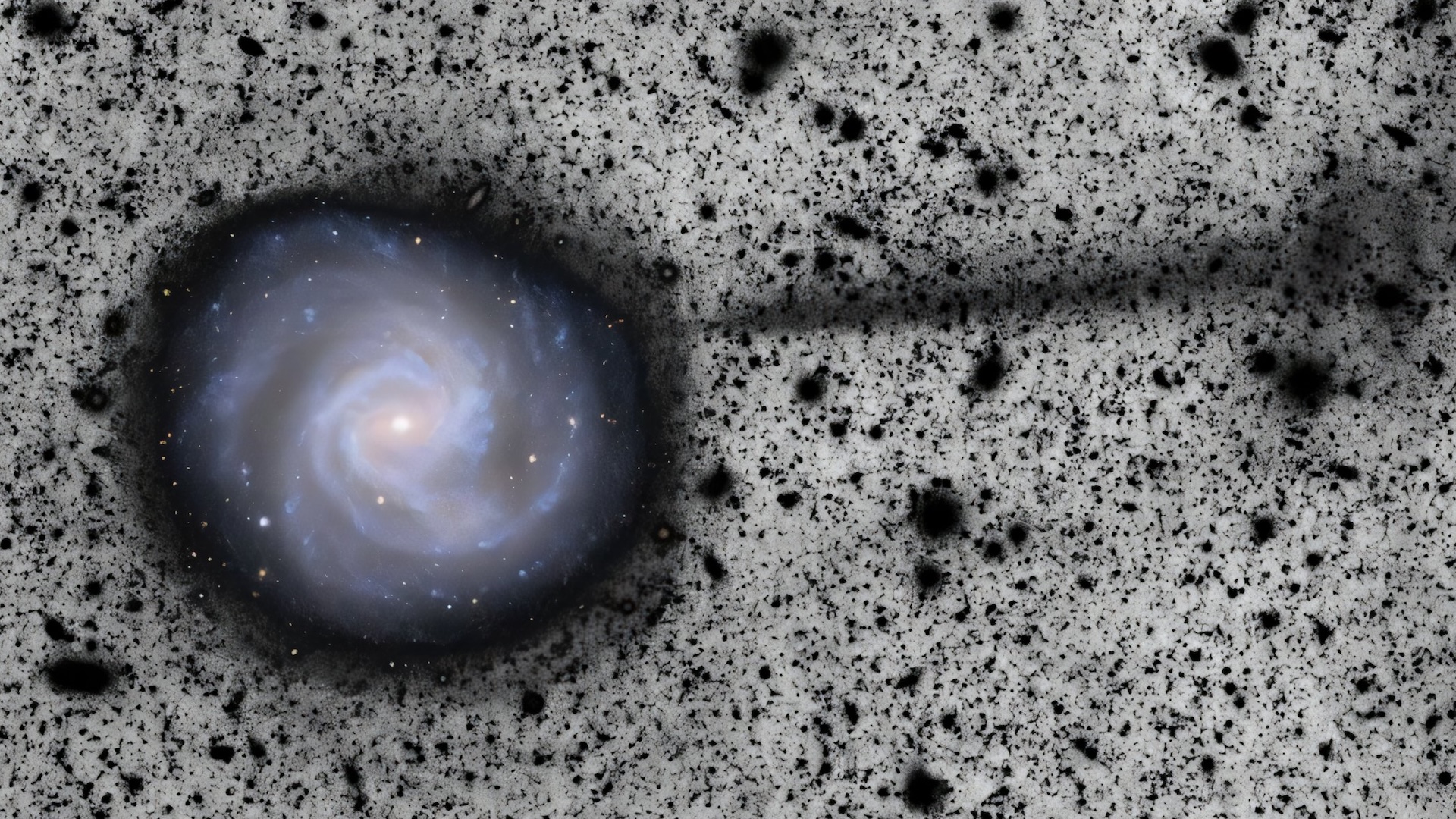
This Is Not Mars

This barren, reddish terrain may look like it belongs on Earth's neighbor, but it's no Martian landscape -- it's actually a unique geological feature in Australia.
Located in the Northern Territory of Australia, Uluru-Kata Tjuta National Park hosts some of the world's most spectacular examples of inselbergs, or isolated mountains.
The most famous of these inselbergs is Uluru (also known as Ayers Rock). An equally massive inselberg located approximately 20 miles (30 kilometers) to the northwest is known as Kata Tjuta. Like Uluru, this is a sacred site to the native Anangu or Aboriginal people.
An English-born explorer named the highest peak Mount Olga, with the entire grouping of rocks informally known as "the Olgas." Mount Olga has a peak elevation of 3,507 feet (1,069 meters) above sea level, making it 676 feet (206 meters) higher than Uluru.
This image of the summits of Kata Tjuta against the surrounding sandy plains was taken by an astronaut aboard the International Space Station.
In the lower left portion of the image are sand dunes, while to the bottom and right of the picture are sediments that have been washed from the rocks and anchored by a variety of grasses and bushes adapted to the arid climate.
Green vegetation in the ephemeral stream channels that drain Kata Tjuta contrasts strongly with the red-brown terrain.
Get the world’s most fascinating discoveries delivered straight to your inbox.
Large gaps in the rocks (highlighted by shadows) are thought to be fractures that have been enlarged due to erosion.
Kata Tjuta is made up of gently dipping Mount Currie Conglomerate, a sedimentary rock that includes rounded fragments of other rock types (here, primarily granite with less abundant basalt and rhyolite in a coarse sandy matrix).
Geologists interpret the Mount Currie Conglomerate as a remnant of a large fan of material rapidly eroded from mountains uplifted approximately 550 million years ago. Subsequent burial under younger sediments consolidated the eroded materials to form the conglomerate exposed at the surface today.
- 101 Amazing Earth Facts
- Observing Earth: Amazing Views From Above
- Images: Volcanoes from Space

